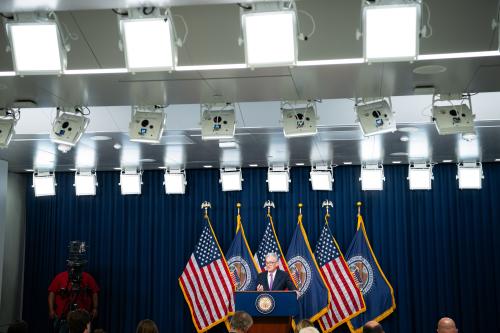The current state of the world economy and the extraordinary experience of negative nominal interest rates are the outcome of a number of overlaying factors. To understand the implications of negative interest rates it is worth considering the difference between the short run and the longer run.
The interest rate usually observed in financial markets is a nominal interest rate. The nominal interest rate has two components: the real rate of interest plus the expected rate of inflation. The real interest rate at the global level is driven by equilibrating global savings with global investment. Historically negative real interest rates have occurred periodically when global savings exceeded global investment and the real interest rate fell to equilibrate savings and investment.
Real interest rates are falling today because savings are high and investment is low globally. Long term real interest rates are low, presumably because this lack of investment relative to savings is expected to last for many years.
The short term nominal interest rate (policy rate) is usually set by a central bank to control macroeconomic targets. The short term real interest rate is this policy rate less expected inflation in the short term. The real interest rate is thought to have a larger impact on the economy than the nominal interest rate. With weak demand, reducing the real interest rate is the actual goal of monetary policy. This can be done by cutting the policy rate or raising expected inflation.
The longer term nominal interest rate is the real interest rate expected over the long term plus the long term expected inflation rate. It is difficult for a Central bank to control longer term nominal interest rates because the real interest rate is driven by long term savings and investment. Central banks can only have some impact either through changing inflation expectations or by distorting the bond market by buying large quantities of bonds. This latter policy is the basis of Quantitative easing (QE).
Why are some nominal interest rates going negative? Central banks and governments responded to the 2009 financial crisis with unprecedented monetary and fiscal stimulus. Rather than allowing balance sheets to contract and a collapse of the economy, adjustment was postponed. However the problems from the 2009 crisis have not miraculously disappeared due to the actions of gifted policy makers. After seven years there is more fragility today in the global economy than before the 2009 crisis. Instead of solving the problems in the global economy the policy responses have sown the seeds of the next major crisis. This is not the fault of central banks – they have responded by smoothing the cycle to give time for other policies to be implemented and to produce a sustainable recovery. The problem is with governments who have not implemented the necessary policies to raise productivity growth and they have worsened fiscal overhangs.
The macroeconomic logic of the policy response has been clear. To avoid a great depression demand needed to be generated by loose monetary policy and a rise in government spending financed by debt. The problem with excessive government debt that has not created productive assets is that at some stage someone has to pay taxes to service the debt and ultimately bring it back to sustainable levels. This increases uncertainty about the after tax expected return on investments and therefore causes investment to fall. Thus in a world of falling productivity and slower population growth due to demographics, global savings will rise and global investment will fall driving down the real interest rate. As demand growth falls, inflation also begins to fall and expectation of lower inflation also drives down longer term bond rates. Government debt above reasonable thresholds further dampens investment and drives the risk adjusted real interest rate negative. Risk begins to rise.
Once short term interest rates hit zero, many countries started QE which involves buying assets in private markets to further boost asset prices. In a normal world financial prices should reflect some underlying real activity. For example, the value of a share in a company should reflect the expected future dividend stream of the company discounted at the interest rate.
Unless QE results in a rise in real underlying economic activities, the high value of assets (equities, commodities, houses etc) are only driven by artificial demand from central banks rather than fundamental returns. There may be a temporary positive wealth effect through rising asset prices but this is an illusion.
When QE did not have the desired results of raising economic activity and raising inflation some central banks implemented negative interest rates. Banks holding excess reserves at the central bank now have to pay for the privilege rather than earning interest on these reserves. This should force banks to lend those excess reserves to raise economic activity. The problem is that if no one wants to borrow then the banks cannot lend. The additional problem with negative interest rates is that they also potentially have significantly negative effects on confidence which undermines the purpose of the policy.
Seven years after the financial crisis many markets have been severely distorted both by ultra-loose monetary policy and through a massive build- up of government debt and also private debt in a number of countries (particularly emerging economies). Australia is in a better position than most but will still experience the global consequences.
The current problems can only be resolved through globally coordinated policies that raise real economic activity through productivity growth and removal of barriers to trade. There also needs to be an orderly deleveraging of stressed balance sheets and a rebalancing of the fiscal accounts of excessively indebted economies. The sooner this process begins the better for the global economy.
Editor’s note: This piece originally appeared in The Australian Financial Review.


Commentary
Op-edUnreal interest rates will not create real demand
February 17, 2016